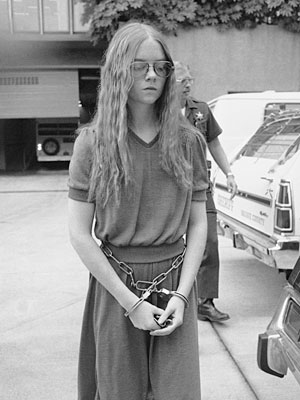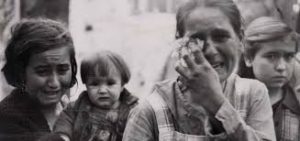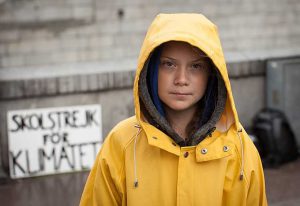“Ugh, it’s Monday” are the words that usually follow the arrival of the most dreaded day of the week. The sighs floating in the air are palpable and nothing seems possible. Mondays always carry with them a negative connotation and contain components such as depression, fatigue, and anguish. But to a San Diego elementary school, and to a troubled sixteen year old, Monday, January 29, 1979 held an even more distressing meaning.

Students at Grover Cleveland Elementary School, located in San Diego, California, began what they believed would be a normal Monday morning like any other, with bells ringing and students racing to their classes. Little did they know, however, that across the street, sixteen-year-old Brenda Ann Spencer was aiming her .22 caliber semiautomatic rifle right at society’s ultimate refuge, the elementary school, and its surroundings. After the first bell rang, Brenda broke the panels on the front door of her home, which was located right across the street from the elementary school. And she began to fire. The school’s principal, Burton Wragg, while rushing outside, was hit on the shoulder and chest with Spencer’s bullets and eventually died. Michael Suchar, the school’s custodian, ran outside with a blanket in order to cover Wragg and keep him from going into shock, but he quickly became the second victim of Spencer’s shooting and lost his life. In between all the chaos, 28 year old Robert Robb, a recent graduate of the police academy, while examining Wragg’s and Suchar’s bodies, was shot under his right shoulder blade.1 He would go on to survive though, along with the eight other children who were wounded in the incident. At least three of those children had abdominal wounds. A nine-year-old student, Cam Miller, was struck in the back with a bullet that exited through his chest without hitting any internal organs. Another, Christy Buell, was shot through her abdomen and in the buttocks, and had to undergo surgery in order to repair her intestine.2
When Gus Stevens, a reporter for the San Diego Evening Tribune, began calling around the area to gain more information about the shooting, he coincidentally placed a call to Spencer’s home where she gave him exactly what he wanted. She described the shooter, a sixteen year old, and the shooter’s address. When Stevens realized that she gave him her own address, he recognized what was going on and requested an interview while another staff member informed the police of the situation. The police, now aware of where the shots were coming from, were able evacuate the children and obstruct Spencer’s line of sight while trying to negotiate with her. After several hours, Brenda Spencer surrendered her weapon and several rounds of ammunition, and was subsequently arrested. While on the phone with Stevens, Spencer had stated that she was just shooting for the “fun of it.” She went on to say that she just didn’t like Mondays and did this “because it’s a way to cheer up the day.”3

Contrary to her initial claim, she later went on to state in her 2001 parole hearing that she had been “sexually abused by [her] father” and was “waiting for the cops to show up so they could shoot [her].”4 This new information has fueled many more theories today about Brenda Spencer’s true motives in committing such a crime. During her pretrial psychological testing, an injury to Spencer’s temporal lobe came to light. Spencer has also stated in a letter from prison that she experiences “grand mal seizures” that she has to counteract with medications.5 Such a brain injury would definitely be a precursor to epilepsy, which is two to four times more common among violent offenders than the public.6 The lack of treatment she received for this disease, to some, proves the neglect that she experienced from her family and in her childhood. Psychologist Jonathan Fast introduces the idea that her brain injury, abuse, and the effects of it pushed her to her final actions. He believes that the shame, ridicule, inferiority, and powerlessness that she felt encouraged her to go as far as she did. In another letter she wrote in prison, she stated that her “father had done everything a person could do to another person. The beatings, the touching, the emotional abuse.” She went on to state that no one, not teachers or counselors, gave her assistance through this, so she simply thought that this was how the world and how life worked. When her father gifted her the .22 caliber rifle, she thought that he was finally telling her to do it: to take her life successfully, unlike her past suicide attempts, and leave the world forever.7
Whether these theories are true or not, Brenda Spencer was tried as an adult and pleaded guilty to two counts of murder and nine counts of assault. She was sentenced to twenty-five years to life in prison, and is still serving her sentence at the California Institute for Women. The shooting has inspired a song by the Boomtown Rats called “I Don’t Like Mondays,” and has also gained other media coverage through a documentary.8 Her action went down in history as the first high profile school shooting and has become a vanguard to many future, unimaginable school situations and violent outbreaks. Whether Spencer was a cold-hearted killer or a truly lost and confused soul that simply wanted an escape, it is undeniable that her horrible actions have had some frightening consequences in our modern world.
- Jonathan Fast, Ceremonial Violence (New York: The Overlook Press, 2008), 25, 70-71. ↵
- Tamara Jones, “Look Back in Sorrow,” Good Housekeeping 227, no.5 (November 1998): 118. ↵
- Jonathan Fast, “Unforgiven and Alone: Brenda Spencer and Secret Shame,” in School Shootings: International Research, Case Studies, And Concepts For Prevention, ed. Nils Böckler (New York: Springer, 2013), 253-255. ↵
- Debra Sevey, “Subsequent Parole Consideration Hearing of Brenda Spencer,” (Capitol Electronic Reporting, 2001), 15-16. ↵
- Jennifer Furio, Letters From Prison: Voices Of Women Murderers (New York: Algora Pub., 2001), 134. ↵
- Jonathan Fast, ” Unforgiven and Alone: Brenda Spencer and Secret Shame,” in School Shootings: International Research, Case Studies, And Concepts For Prevention, ed. Nils Böckler (New York: Springer, 2013), 251. ↵
- Jennifer Furio, Letters From Prison: Voices Of Women Murderers (New York: Algora Pub., 2001), 134-135. ↵
- Encyclopedia of School Crime and Violence, September 2011, s.v. “Brenda Spencer,” by Laura L. Finley. ↵



243 comments
Katherine Watson
Although this was not the first school shooting, it was the one that sadly inspired others to act of pure violence and hate to others in a school setting just for the “fun” of it. When the interviewer made that call to get more information, she said she committed the crime because she needed something to make her day better. Although she tried to deny it and blame it on the fact that her father did things to her and she was not in the right mental state, this woman knew exactly what she was doing and still went forth with her acts. People should not be allowed to have a lesser sentence or receive any pity in their life if they are going to take the lives of innocent.
Daniela Martinez
I had never heard of this school shooting before, this article does a great job explaining the main details of the case as well as giving the backstory. I think that in America today, school shootings are one of the biggest issues the country faces. Just in 2018 alone, multiple mass shootings happened across America causing much tragedy and loss. This case like many others highlights the fact that many of the school shooters often have psychological and other mental issues that often are not treated while growing up. After reading this case, what stood out to me the most is that her own father gifted her with a .22 caliber rifle and how no one really had the motive to understand Spencer’s own family would gift a rifle to an underage kid. While granting that Spencer’s life at home was not a ray of sunshine, her actions, as well as her families, are unjustifiable.
Kathyleen Lauriano
First of all no one should ever target an elementary school or any school for that matter. Those people were innocent and didn’t deserve it. Whatever was happening to her in her house doesn’t justify her actions. I’m glad they got her so she didn’t cause more harm. Its sad that she did want to end her life and had to do something this drastic to try and get killed.
Rebecca Campos
I had actually never heard of this case was labelled to be the “first high profile school shooting.” The author presented this specific case well from telling the story to keeping the audience interested. I like that the author didn’t tell all the details from the shooter’s perspective right away so as not to cause any immediate conclusions to be drawn. The story kept the audience on their toes and that’s essential.
Luke Lopez
This article described the first high profile school shooting in an elementary school. I have heard about this incident that took place in 1979, but did not know the specific details. It is terrible that Brenda Spencer targeted children, just because it was a monday. She may have had problems with her father, but that does not justify shooting children.
Jorge Martinez
This article indirectly states that we should improve our attention to mental disorders. I was going to argue gun control, but the .22 was a horrendous gift to Brenda Spencer. I do understand however, that this occurred almost almost 30 years ago, but it shows that we have not made much progress. The title of the article is honestly chilling as the attack was not really planned at all.
Nathan Hartley
I think that this article does a very good job at identifying a serious problem facing America today. A large portion of shootings are done by people who are mentally unstable or have mental health problems. I think that the way this article presents the facts is very well done. It’s also scary to think that she was getting neglected by her family and that’s why she did this.
Jonathan Arreola
In the beginning of 2018 America suffered through an outrageous number of school shooting across the nations, this is the reason I had interest in this article. When I read about these shooting accounts, I am equally depressed as I am curious. I simply don’t understand what a shooter is experiencing and it is unimaginable what the family members of the victims have to endure. I always wonder about the things that go through the minds of the shooters when they are committing their act. As for Brenda Spencer, it angers me that she was abused by her father, but initially, I cant believe that she killed just for fun and simply because she hates Mondays.
Antoinette Johnson
It is horrible to shoot up an elementary school with so many innocent people and children wandering living their life in the moment. It is also horrible for a sixteen-year-old girl to be going their physical, sexual, and emotional abuse along with underlining mental problems. Having these problems still gave Brenda Spencer no right to hurt any person. Sometimes you have to realize hurting others are not going to end the suffering that you feel. Brenda Spencer was going through a lot that would have made anyone lose their mind, but a decision to cause harm to innocent people is the right one. We won’t know if she regrets her actions, but I hope she realizes her actions were not right and the same she feels burden and anguish of the abuse she went through. The victims and their families feel the same way.
Clarissa Gonzalez
I had previously heard about a school shooter who had done it just because it was Monday, but I had never known who it was, or what was the story behind it. Reading this and learning that there was more to it then that, isn’t relieving, but at least has more to reason than what I knew before. She lived right across the street, which reminds me of a neighborhood near mine that also has an elementary school in it. The fact that there can be people in any house near me with that type of mindset is actually insane.